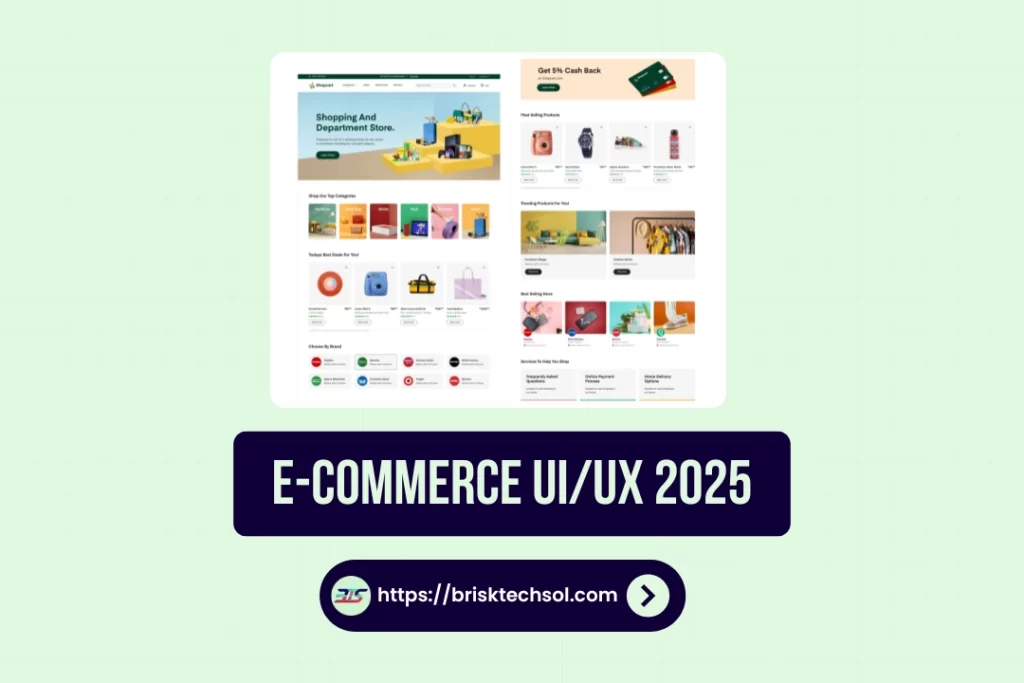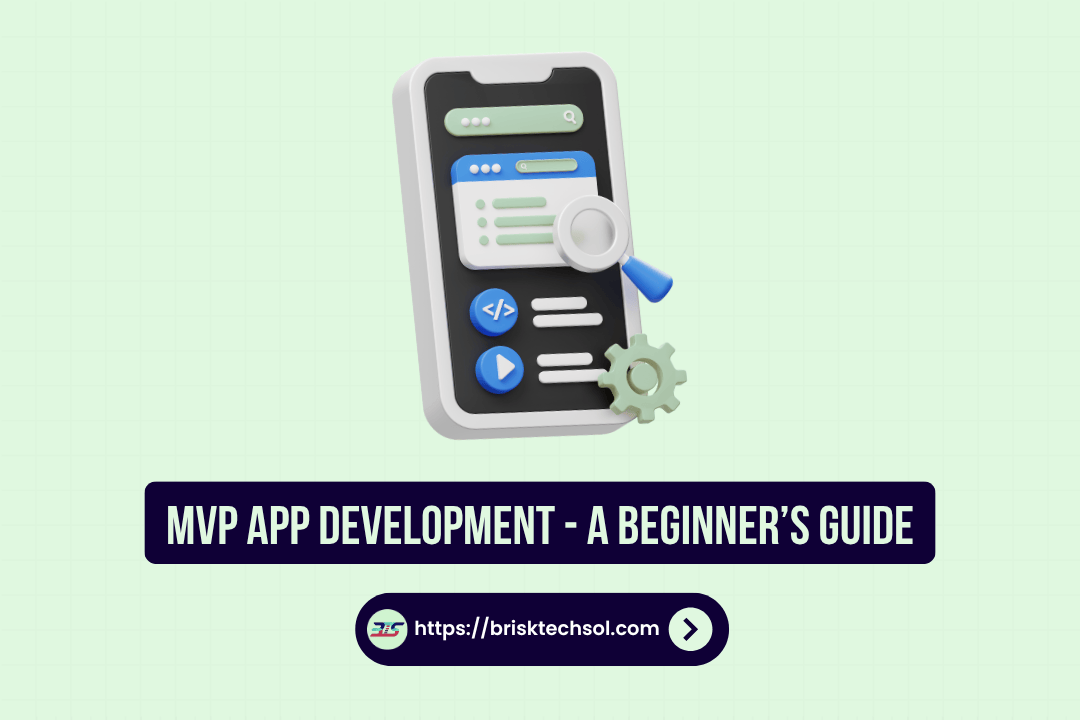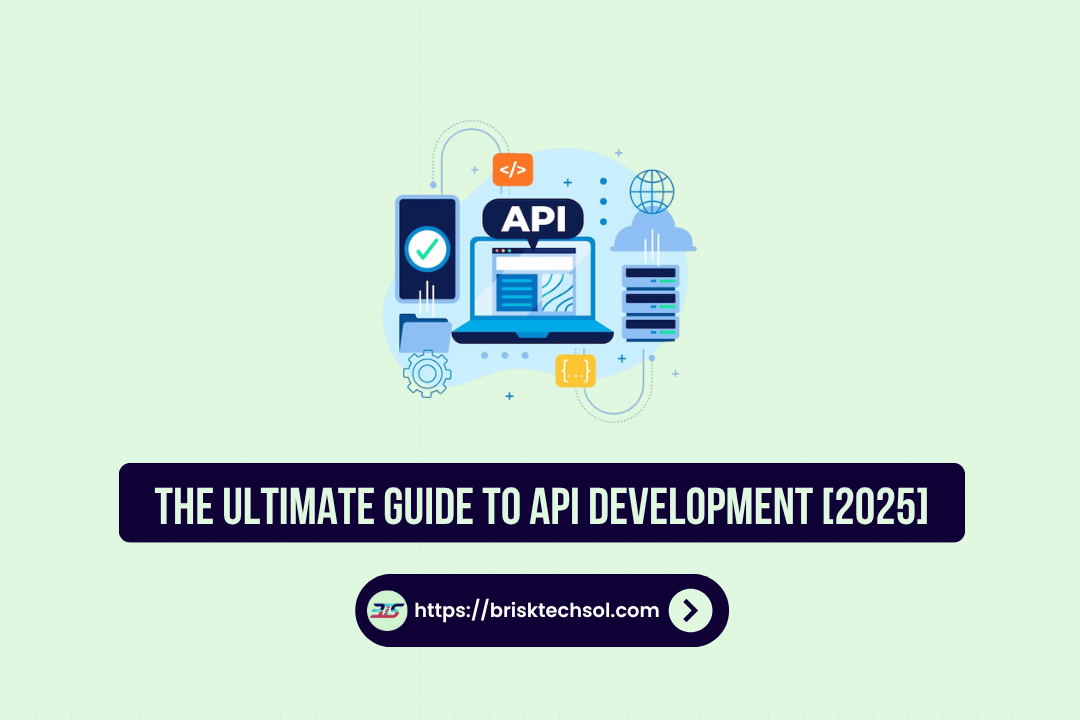UI design is crucial for e-commerce success. It impacts how users navigate your site and make purchases. A well designed interface improves the shopping experience, boosts conversions, and increases sales. In this article, we’ll explore how to optimize your e-commerce UI and the latest trends for 2025.
What is UI in E-commerce?
User Interface (UI) refers to the design of the layout and interactive elements of a website or application. In e-commerce, UI design is all about creating an engaging and functional interface that allows users to easily navigate, browse products, and make purchases with minimal effort.
UI and User Experience (UX) are often used interchangeably, but they are distinct. While UI focuses on the visual aspects and interactive elements of a website, UX encompasses the overall experience, including how the user feels and interacts with the platform.
In e-commerce, UI design plays a pivotal role in converting visitors into customers. A website with a clean, easy-to-use interface is more likely to engage visitors, improve their experience, and drive sales.
Did You Know?
Key Principles of E-commerce UI Design
Creating an optimal UI for an e-commerce site involves much more than choosing pretty colors or attractive fonts. It requires a solid understanding of design principles that improve usability, engagement, and conversions. Here are some key principles:
1. Consistency in Design
Consistency is essential for building trust with customers. A consistent design creates a sense of familiarity and reliability. From buttons to icons, maintaining a uniform layout across pages ensures that users know exactly where to find what they need.
2. Simplicity
A simple UI design is often the most effective. Complex interfaces with excessive text, images, or distracting elements can overwhelm users and create confusion. A clean design with clear navigation paths is critical to ensure a smooth shopping journey.
3. Visual Hierarchy
Visual hierarchy guides users through the website. By arranging design elements in a way that reflects their importance, you help users navigate through your site with ease. Key elements, such as CTAs (Call-to-Action buttons), should stand out prominently.
4. Mobile-First Approach
With mobile commerce continuing to rise, it is crucial to prioritize mobile-first design. A responsive website adjusts its layout based on the screen size, ensuring an optimal shopping experience across devices.
Example
E-commerce UI Best Practices for Conversions
UI design can directly influence conversion rates. Here are some best practices that can enhance your site’s performance and encourage users to take action:
1. Clear CTAs (Call-to-Action)
The primary goal of an e-commerce website is to guide users toward making a purchase. Use clear and compelling CTAs that stand out and tell users what to do next. Whether it’s “Add to Cart,” “Buy Now,” or “Sign Up,” your CTAs should be bold, easily accessible, and action-oriented.
2. Optimize Product Pages
Your product pages are the heart of your e-commerce store. They should display high-quality images, concise descriptions, and prominent pricing information. An optimized product page should also feature easy-to-find options for size, color, or quantity selection.
3. Fast Load Times
Speed is critical in e-commerce. Studies show that a one-second delay in page load time can result in a 7% decrease in conversions. Fast loading times not only improve user experience but also help reduce cart abandonment.
4. Create Trust Through Design
Adding elements like customer reviews, secure payment options, and trust badges can increase credibility and trust. Users are more likely to purchase from a site that feels secure and reputable.
Example
UI Design Trends in E-commerce for 2025
As we move into 2025, several UI design trends are shaping the future of e-commerce. Here’s what you should look out for:
1. Dark Mode vs. Light Mode
Many e-commerce websites are embracing the dark mode trend, offering users the option to toggle between dark and light themes. Dark mode provides a sleek, modern look, reduces eye strain, and can help highlight key design elements like CTAs.
2. Interactive UI Features
Interactive elements such as animations, micro-interactions, and dynamic buttons are gaining popularity. These features help engage users and provide a more enjoyable browsing experience. For example, when users hover over a product, a quick animation might showcase different color options.
3. AI-Based Personalization
AI-driven personalization is transforming how e-commerce websites tailor the user experience. By analyzing user behavior, e-commerce sites can provide personalized recommendations, adaptive layouts, and dynamic pricing, which all contribute to a more engaging UI.
Example
Mobile UI Design for E-commerce
Mobile shopping continues to grow rapidly, so optimizing your e-commerce UI for mobile users is more important than ever. A mobile-first approach is essential for ensuring that your website is accessible and user-friendly on smartphones and tablets.
1. Simplified Navigation
Mobile screens have limited space, so navigation must be streamlined. Use a collapsible menu or a simple, icon-based navigation bar that provides easy access to product categories, the shopping cart, and user profiles.
2. Touch-Friendly UI
Touch interactions require larger buttons and touch targets, especially for actions like adding items to the cart or checking out. Ensure your CTAs are large enough to be easily tapped on mobile screens.
3. Mobile-Optimized Checkout
A mobile-optimized checkout process is critical for reducing cart abandonment. Allow users to quickly fill out their information, and offer payment options like mobile wallets (Apple Pay, Google Pay) to expedite the transaction.
Example
How to Test Your E-commerce UI
Testing is an essential part of optimizing your e-commerce UI. Here’s how to ensure your design is performing at its best:
1. A/B Testing
A/B testing allows you to compare two versions of a webpage to determine which one performs better. You can test different elements like CTA buttons, product page layouts, or even checkout flow.
2. Heatmaps
Heatmaps help you understand where users click most often on your site. This data allows you to adjust your UI layout to place key elements in areas where users are most likely to interact with them.
3. User Feedback
Conduct surveys or use tools like session replays to gather user feedback. Understanding their pain points can help you fine-tune your UI design for a better experience.
Example
Key Takeaways
- UI Design is Crucial for Conversions: A user-friendly UI enhances navigation and encourages customers to complete their purchases, directly impacting sales.
- Mobile Optimization is Essential: With more shoppers on mobile, ensure your UI is responsive and offers a seamless mobile experience to boost conversions.
- Focus on Clear Call-to-Actions: Well-placed, easy-to-understand call-to-action buttons guide users through the shopping process, reducing friction and increasing conversions.
- Minimalist Design Drives Results: Simplified designs with fewer distractions improve user experience, keeping customers engaged and more likely to make a purchase.
- Leverage User Feedback: Regularly collect and analyze user feedback to refine your UI design, ensuring it aligns with customer expectations and enhances usability.
- Stay Updated on UI Trends: Follow the latest UI trends, such as AI integration and dynamic product displays, to keep your e-commerce site competitive and appealing.
FAQ‘S
What is UI in e-commerce?
UI in e-commerce refers to the design and layout of a website or application, including interactive elements that help users navigate and make purchases.
How does UI impact conversions in e-commerce?
A well-designed UI can improve the user experience, make navigation easier, and reduce friction points, leading to higher conversion rates.
What are the best UI practices for e-commerce websites?
Best practices include clear CTAs, optimized product pages, fast load times, and mobile-first design.
How can I optimize my website’s UI for mobile users?
Use simplified navigation, large touch-friendly buttons, and a mobile-optimized checkout process to improve the mobile experience.
How to design UI for an e-commerce website?
Focus on clean layouts, easy navigation, mobile optimization, and clear call-to-action buttons to enhance user experience and drive conversions.
Why is UI/UX important in e-commerce?
UI/UX ensures a seamless, intuitive shopping experience, improving navigation, customer satisfaction, and boosting conversion rates.









